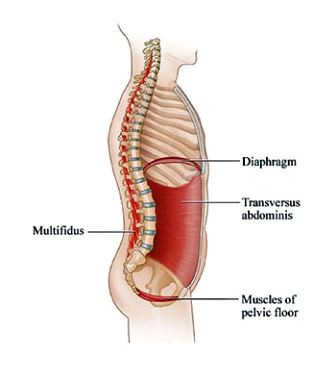What is Core Stability? And Why is it So Important?
Core Stability or Control is a term that is thrown around frequently these days and for many there seems to be some confusion around what it actually means. So I thought I would aim to provide some clarification from my Physiotherapist/Pilates Instructor point of view:
First, a little back-ground, there are two basic types of muscles in your body, the generally more superficial, larger, mover muscles that contract (shorten) to provide movement across a joint – think of your biceps, when you contract your elbow bends. Then there are your generally deeper, smaller stabiliser muscles that contract to provide stability to a joint – think of your multifidi (you may not be so familiar with these muscles!), these small muscle pass from one vertebra to the next and when these contract they provide spinal stability. For normal pain-free movement you need all these muscles to work in harmony together and in a beautifully balanced manner.
 When it comes to your abdominals, the outer moving muscles are easy to feel, your rectus abdominis (6 pack muscle) and Quadratus Lumborum (lower back muscle that runs diagonally to your pelvis) help to bend you forwards and sideways and work hard for short periods of time whilst you are moving. Meanwhile the deeper down stabilisers such as the Transversus Abdominis, Multifidi and Pelvic Floor muscles tend to work at a lower level (about 20-30% of their maximum) and they do this for a long time, whilst we move and whilst we are stationary to keep us upright.
When it comes to your abdominals, the outer moving muscles are easy to feel, your rectus abdominis (6 pack muscle) and Quadratus Lumborum (lower back muscle that runs diagonally to your pelvis) help to bend you forwards and sideways and work hard for short periods of time whilst you are moving. Meanwhile the deeper down stabilisers such as the Transversus Abdominis, Multifidi and Pelvic Floor muscles tend to work at a lower level (about 20-30% of their maximum) and they do this for a long time, whilst we move and whilst we are stationary to keep us upright.
It is when these deep down stabilisers fail to work adequately that we can run into problems that lead to pain and reduced function. This often corresponds with an increase in activity in the mover muscles and an imbalance occurs between the two types.
As a physio when I talk about “Core Work” or “Core Stability” or “Core Control” I am generally talking about the activation of these deep down stabiliser muscles that keep the joints they surround nice and stable and safe. So to me, core work is gentle exercises that get these muscle switching on the right way and in a way that can be maintained throughout your daily activities, keeping you strong, supple and well supported.
When doing “Core Work”:
- You should always be able to breathe!
- It shouldn’t feel like you are working at 100%
- You should not feel any pain
- Your body shouldn’t be completely rigid – it was made to move!
For more advice book in for an appointment – http://nzappts.gensolve.com/central_lakes
